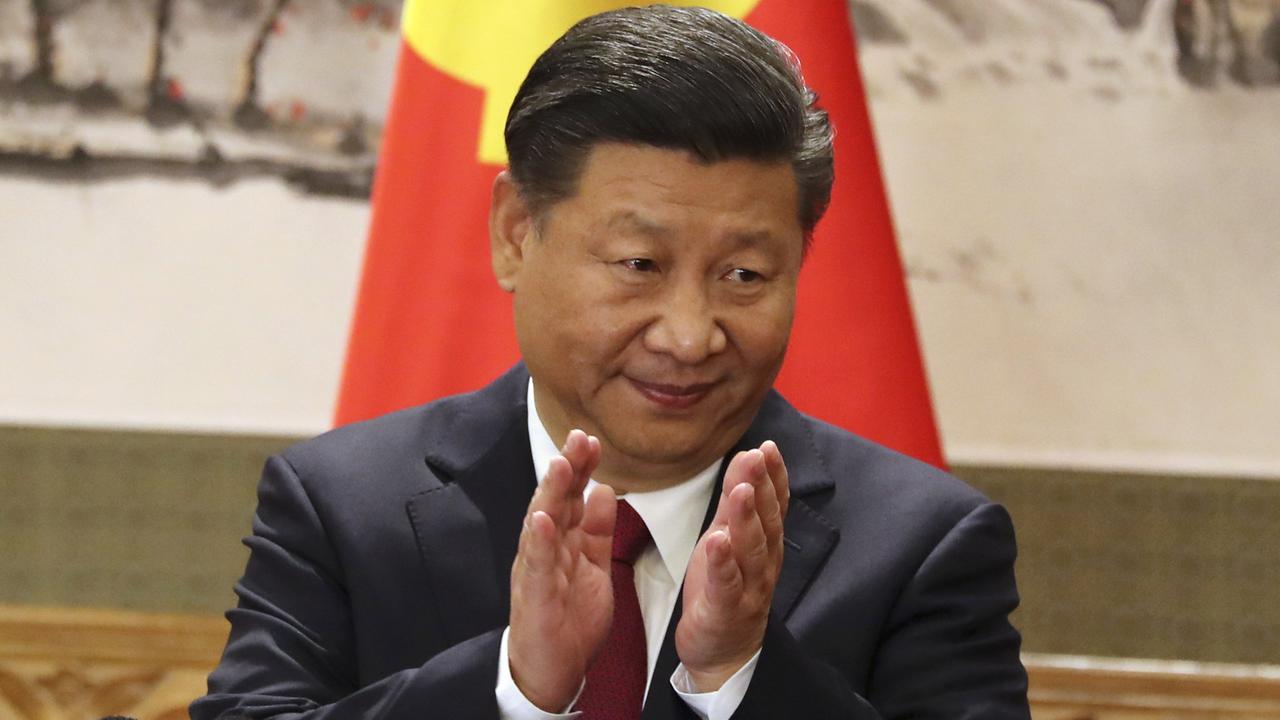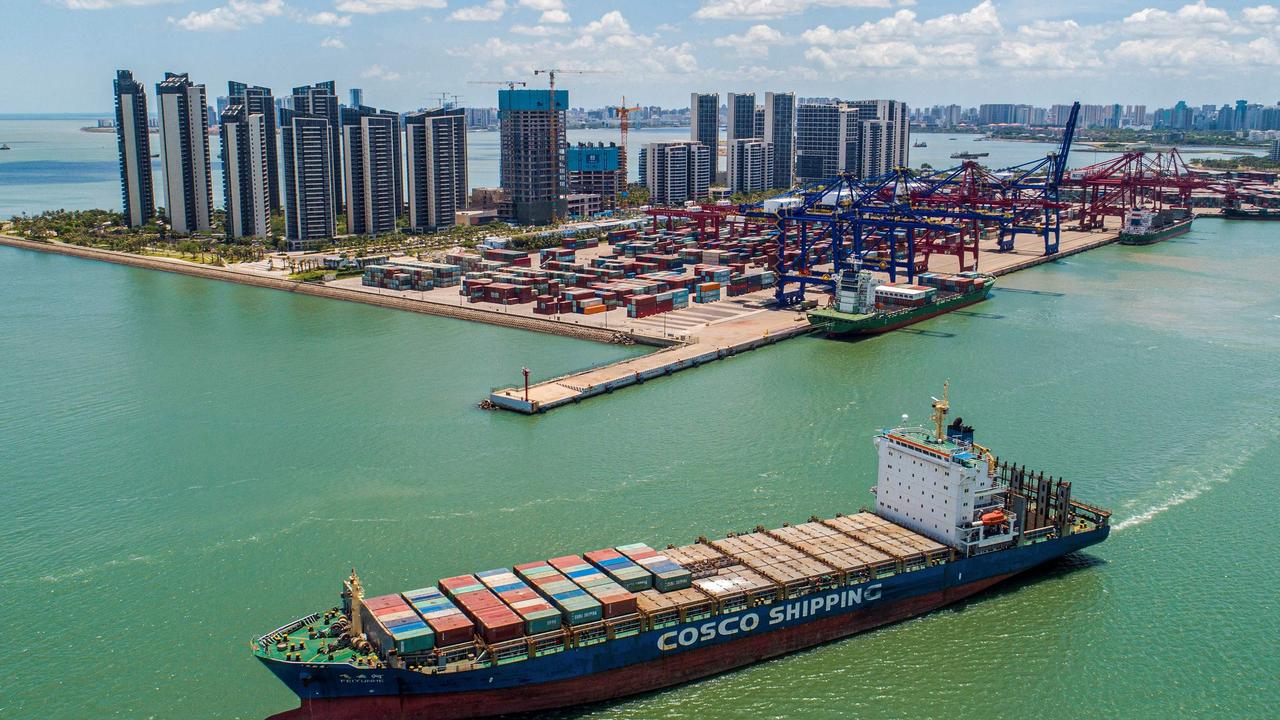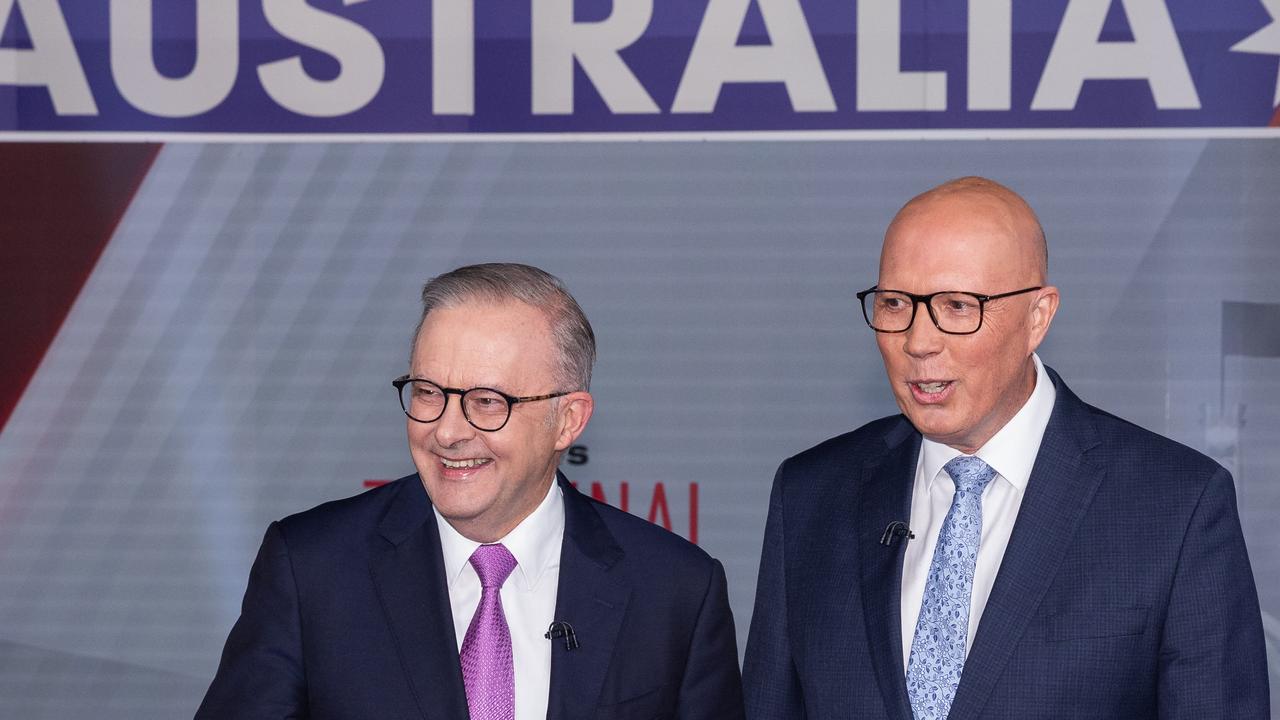Incredible figures show trade between China and Australia has risen by 32.6 per cent
Despite everything that’s happened between Australia and China, incredible new figures show both nations just can’t get enough of each other.

China and Australia have been trading barbs and flexing muscles like boxers at a weigh-in over the past year, but, when they stepped away from the cameras, something remarkable happened.
Despite everything that has transpired between the two nations since the onset of the pandemic, eye-watering new figures show they simply can’t get enough of each other when it comes to trade.
Customs data from Beijing show the value of total trade between Australia and China has risen by a massive 32.6 per cent year-on-year between January and May, to $US62.4 billion ($A80.7 billion) – as the Asian superpower’s imports grow at their fastest pace in a decade.
This all comes despite tensions between the two nations that resulted in a trade stand-off which many economists predicted would seriously harm Australia.
Most recently, China has tried to hit Australia’s most lucrative export, iron ore, by aiming to source it from other nations.
The plan was to bring the price of iron ore – which hit a record of more than $US230 ($A296) a tonne last month – down to save on costs.
As we have seen over the past month, that plan has not worked.
Last week, iron ore prices rose every day for six days straight – including a whopping 10.3 per cent rise on Wednesday.
This week the price has eased slightly to $US202.85 ($A261.70) a tonne in the latest trading session, but the price is still high.
RELATED: Fears Australian property will suffer after China move

China is buying the stuff at record levels to create steel and fuel its ambitious infrastructure plan to bounce back from the pandemic.
And, the new figures show just how much they are buying.
China’s total iron ore imports measured by volume increased by six per cent to 444.89 million tonnes in the first five months of the year. By value, they skyrocketed 85.7 per cent to $US40.4 billion ($A52 billion).
Despite its plans to look elsewhere, China is dependent on Australia and Brazil for its iron ore – and the Latin American mines have seen major issues due to the pandemic.
While this all spells good news for the Australian economy, as our mining companies corner the market amid record prices, there are signs that China is slowing its iron ore imports down.
Imports of it fell by volume in May compared with the previous month, and the total proportion of it coming from Australia had fallen.
China imported 89.8 million tonnes of iron ore last month, substantially lower than the 98.6 million tonnes it bought in April and 102.1 million tonnes in March.
Its total imports from Australia in May were valued at $US13.6 billion ($A17 billion). This was lower than the $US14.9 billion ($A19.1 billion) worth of goods and services it imported from Australia in April, according to customs data.
Capital Economics expects China will buy increasingly less iron ore in the coming months.
“We forecast that China’s imports of industrial commodities will decline in the coming months, which is a major factor behind our relatively bearish near-term outlook [they believe the price will go down] on the prices of industrial metals,” said the research consultancy in a note.
RELATED: China’s ‘frustrating reality’ cruelly exposed as iron ore prices rise

RELATED: China’s threat could wipe $32 billion from economy
Economists told the Australian Financial Review the dip in May could be part of a broader month-on-month drop in volumes to seasonal factors such as disruption from extreme weather. China’s total iron ore imports between April and May dropped 8.9 per cent.
They said supply chain disruptions were skewing the figures, even as consumption patterns were returning to normal, as vaccine rollouts ended lockdowns in Europe and North America.
“We think that trade volumes, which are now well above their pre-virus trend, will drop back over the coming quarters,” Capital Economics senior China economist Julian Evans Pritchard told the newspaper.
What else did China’s figures show?
China’s exports rose 27.9 per cent in May while imports grew at the fastest pace in more than a decade as the global economy powers back from the pandemic crisis, official data showed.
Demand for China’s goods has bounced after economically painful lockdowns last year due to the Covid-19 crisis, and as vaccines are rolled out across much of the world.
The figures are also boosted by last year’s low base of comparison when coronavirus was spreading rapidly.
Exports from the world’s second-largest economy posted strong growth but came in lower than expectations of 32 per cent.
“To be honest, that is a cracking number by anybody’s standard and shows that global demand remains robust,” OANDA’s Jeffrey Halley said.
In May, import growth hit its highest rate since January 2011, coming in at 51.1 per cent on-year, also slightly below expectations of a Bloomberg poll of analysts.
But still, imports and exports to China’s major trade partners – including Southeast Asia’s ASEAN bloc, the European Union and the United States – have risen in the first five months this year, said customs authorities.
“It’s still a fairly healthy set of numbers,” Jonathan Cavenagh, senior market strategist at Informa Global Markets, told Bloomberg TV.

“We know that global demand is still recovering and that trend is likely to continue towards the end of the second quarter and into the third quarter as the major developed economies open up.”
The lower-than-expected export figure was likely due to port disruptions due to tighter Covid-19 control measures in late May after the virus was detected among staff.
“I think there was some disruption in May from ports,” ING chief economist for Greater China Iris Pang said, referring to recent congestion at southern China’s Yantian port.
Ms Pang added that the Suez Canal incident – when a stranded mega-ship blocked the critical maritime artery for six days in March – had also affected China’s export and import trade.
Electronics shipments have bolstered Chinese exports, rising 31.9 per cent on-year in the January to May period, although growth in demand for textiles – including masks to guard against the virus spread – have eased, dropping 10.3 per cent.
Nomura chief China economist Lu Ting noted that factors behind import growth include rising commodity prices and strong yuan appreciation.
On Monday, authorities said the volume and prices of iron ore, crude oil and soybeans imports have risen.
China’s overall trade surplus came in at $US45.53 billion ($A58.74 billion) in May, an on-year decrease of 26.5 per cent.
– with AFP




